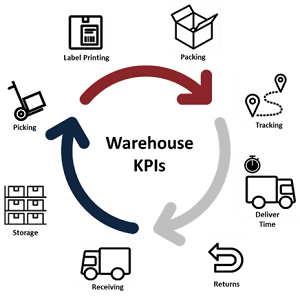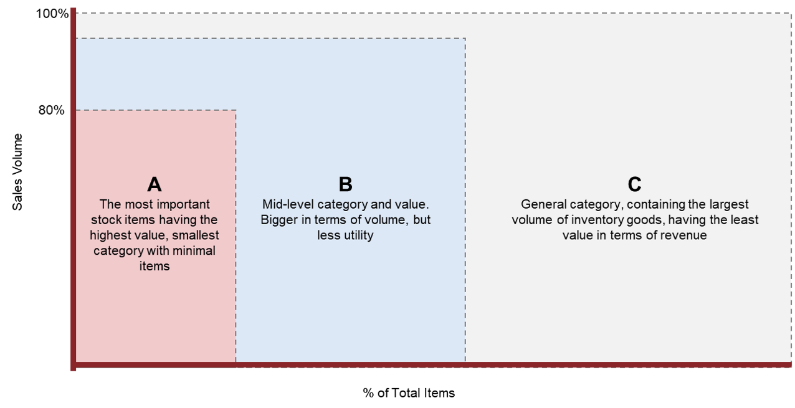The ‘pros’ of moving to a warehouse outsourcing model, vs the ‘cons’ of handing over a key part of your customer experience to a third-Party Logistics (3PL) provider […]
The A-Z of setting up and managing a warehouse in Australia
Everything from planning to inventory storage & management
Let’s look at the items that make up the majority of your warehouse operations. It’s more than the building that houses your inventory.
Any building can be used as a warehouse for storage of your products, but as your organisation grows, your facilities need to grow. This growth is an opportunity to access and improve more than the size of the facility.
All the moving parts
Your warehouse logistics involves all movements of goods and information within your facility. Planning ahead could alleviate a disruption in your current or future operations, as well as service levels you offer your clients.
With this in mind, we will address what we consider to be the major areas that influence your productivity, customer service and your profit margins. These include activities like receiving, storage, order-picking, accumulation, sorting and shipping.
Whether you are planning a new warehouse facility or looking to optimise you current warehouse storage, a structured approach to support the entire process, should be adopted:
- Frame the project objectives
- Define the workstreams
It is important to align stakeholders who will manage the end-to-end delivery of the project, at the start of the planning phase, as they will engage with a variety of suppliers through the process:
-
- definition
- building specification
- location & design
- tendering
- selection
- delivery, and
- transition into operations
| Project Case Studies | |
| Bulk Facility Design |
Validation of optimal storage capacity for the development of a new bulk blending facility accounting for product segregation, import frequency and growth overlays. Through the process the reviewed design addressed [more] |
| Warehouse Design Improvement |
Development of storage layouts designed to maximise footprint utilisation. This included the assessment of what could be racked vs block stacked for site optimisation. As an outcome of the analysis associated with the project [more] |
| Warehouse Business Case |
To assess the viability of adding additional locations to support an expanded interstate network, a comprehensive operational and financial model was built to perform a level playing field evaluation [more] |
Ultimately the goal is to reduce operating costs and get as close as possible to running a lean warehouse.
Maximizing your warehouse storage efficiency can extend its life and potentially avoid an unnecessary and disruptive warehouse move.
Done correctly, there are numerous opportunities to:
- Improve productivity
- Improve picking accuracy
- Improve equipment utilisation
- Improve inventory accuracy
Which in turn will:
- Reduce cycle time
- Reduce safety incidents
- Increase warehouse efficiency
- Increase warehouse space utilisation,
There are a number of ways to assist your warehouse manager in successfully navigating this warehouse efficiency journey, these insights that can be applied to all supply chain sectors.

It’s important to ensure any decisions around site expansion, re-location, or the addition of warehouses in your network are made at the correct time.
- Recognise the early warning signs
- Know your warehousing KPIs
- Run the cubic utilisation test
- Making a visual assessment by ‘walking the floor’
- What has impacted your storage capability?
- Know your data!
- Using the best tools for your business
| Project Case Studies | |
| Site Relocation Planning and Storage |
A preliminary assessment of the storage requirements relating to how to optimise the integrated the facility into the existing site from a storage and traffic management perspectives, identified [more] |
Inventory management is essential to effective sales and operations planning (S&OP).
Effective inventory management is about managing each stock keeping unit (SKU) in each stocking location (SKUL). Management of individual “A”-item SKUs (the 10 percent of SKUs making up 90 percent of revenue, volume, profit, etc.) is necessary, but other less critical items can be managed in groups of similar SKUs (“B”, “C”, etc.).
Here are some symptoms of an inadequate inventory management process.

Here are some important guidelines to consider:
- Manage SKU categories by location
- Set customer service levels for each stock location for the footprint that it serves
- Consider online selling
- Forecast demand effectively
- Set policies and operating parameters
| Project Case Studies | |
| Inventory Management |
Development of an inventory stocking policy for rail assets that would identify and deliver cost savings. This was achieved by developing a segmentation methodology [more] |
| Inventory Location Management |
Embarking on the next cycle of growth, can lead to overinvesting in the wrong scale of solution and limit the ability to invest in further facility production line upgrades [more] |
| Plant Strategy – Inventory Support |
With thousands of storage lines on site, data and processes were analysed, including the work order process and the planning interactions between plant, supply and key suppliers [more] |
| Multi Tiered Inventory Processes |
A strategic sourcing review enabled a reduction in purchasing staff, improvement in operations and a cost saving of 14 to 22% across key categories [more] |
Running an efficient warehouse goes beyond storage management.
Warehouse management system (WMS) selection can be challenging, and you would not be alone in wondering where to start in determining which is the best one to select. To make an informed decision, you need to understand what the options are, why they differ, and which is best suited for your company.
When you break it down, there are basically three types of WMS:
- systems that are integrated within the standard offering of a company’s ERP and provide core functionality.
- fully functional standalone warehouse management system that are connected toa company’s ERP (enterprise resource planning) and provide an extensive set of workflows and reporting suites.
- App based solution or ‘lite’ platforms that may or may not be scalable with the evolution of a business.
How do you choose the warehouse management system that is right for your organisation?
Determining what is best for your organisation requires a clear-eyed assessment of need and a structured approach that in our experience should take into consideration the watch points outlined in this article.
Why would a business want to outsource a key part of their supply chain to a 3PL Company?
The fact is, that most business’ sell products, not fulfilment and distribution.
There are ‘pros’ and ‘cons’ of handing over a key part of your customer experience to a third-Party Logistics (3PL) provider.
Being able to clearly distinguish your needs and here your customer and organisational value is derived, and then articulating these needs to a 3pl provider, is the key to establishing an outside supplier relationship that ticks all the boxes for your client satisfaction and your organisations operational efficiency.
There are a number of areas to consider when defining your needs and values. Take the time to consider these areas in detail:
- Your customers
E-commerce clients, have very different needs based on thousands of individualised, smaller shipments direct to consumers at highly unpredictable times, 24/7. Never before has last mile been so important. The customer owns it and it is the last interface between your business and them.
- Your logistics needs
- The 3pl provider market
- Contract assumptions
- Post contract signing
- Considering a specialist
6 Tips for choosing a Warehouse Management System in Australia
The purpose of the business case is to evaluate the business benefits, cost and risk assessments of alternative options and provides a rationale for the preferred solution […]
7 Tips when deciding on improving your warehouse storage capacity
In this article we will explore some solutions in maximizing your warehouse to extend its life by improving storage efficiency and potentially avoid an unnecessary and disruptive warehouse move. […]
Tips and insights: inventory management
Effective inventory management is about managing each stock keeping unit (SKU) in each stocking location (SKUL). Management of individual “A”-item SKUs (the 10 percent of SKUs making up 90 percent of revenue, volume, profit, etc.) is necessary, but other less critical items can be managed in groups of similar SKUs […]
Tips and insights: Demand forecasting
Accurate demand forecasting is the first step in an effective sales and operations planning (S&OP) process. Over-forecasting or under-forecasting are equally problematic, and result in slow-moving or out-of-stock situations. All demand forecasts are in stock keeping units (SKU) and by stocking location. 5 tips for demand forecasting Know what to […]
Last mile, first impressions: ensuring your e-commerce 3PL provider is up to the job.
The rapid growth of online shopping and blink-and-you’ll-miss-it advances in technology, coupled with frenzied speculation about ‘the Amazon effect’, have sent many small (and not-so-small) retailers into a tailspin. New entrants and experienced retailers alike are scrambling for resources to keep up with the demands that e-commerce is placing on […]
To stay up to date with all the latest Warehousing information register your details.






